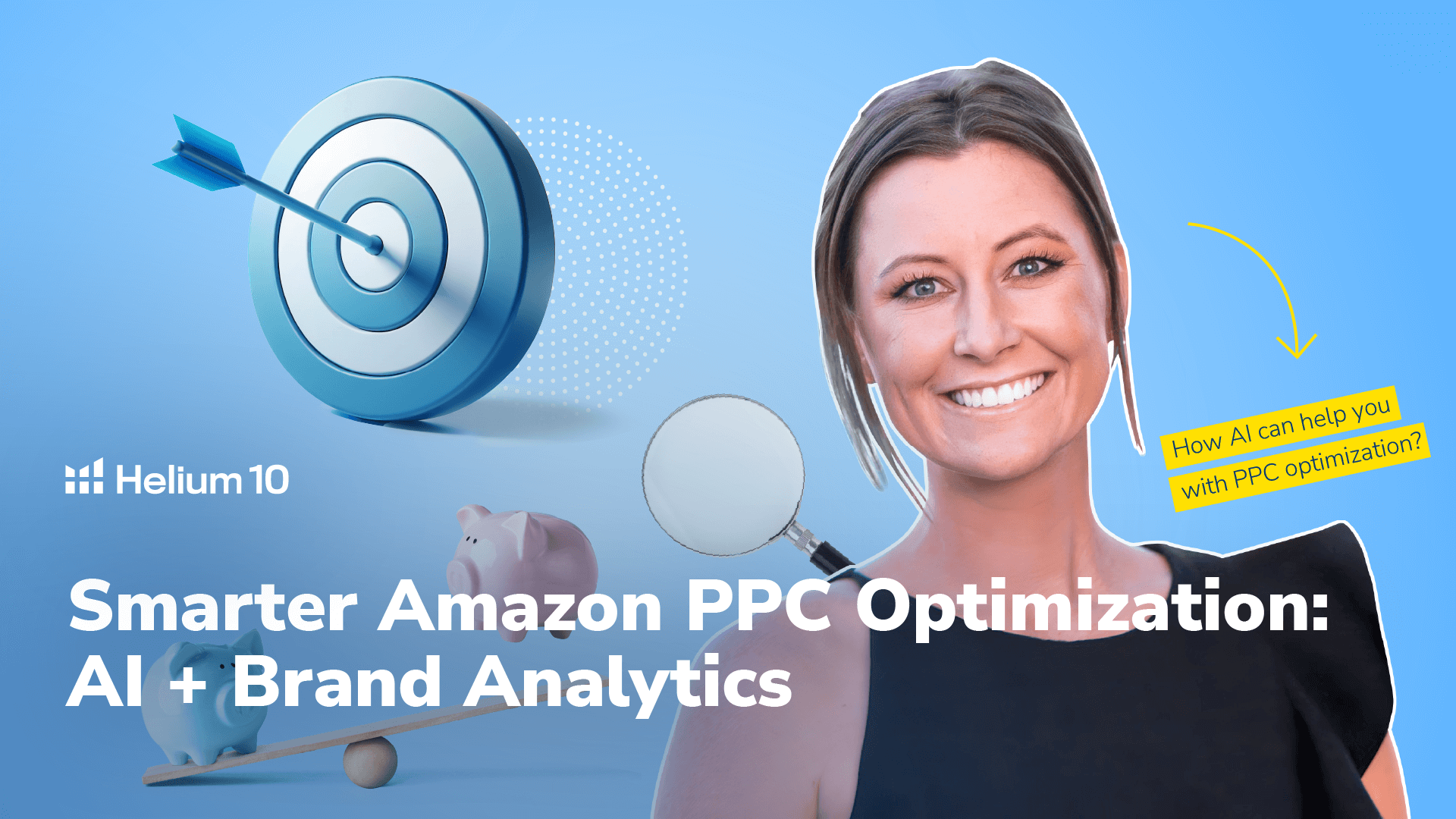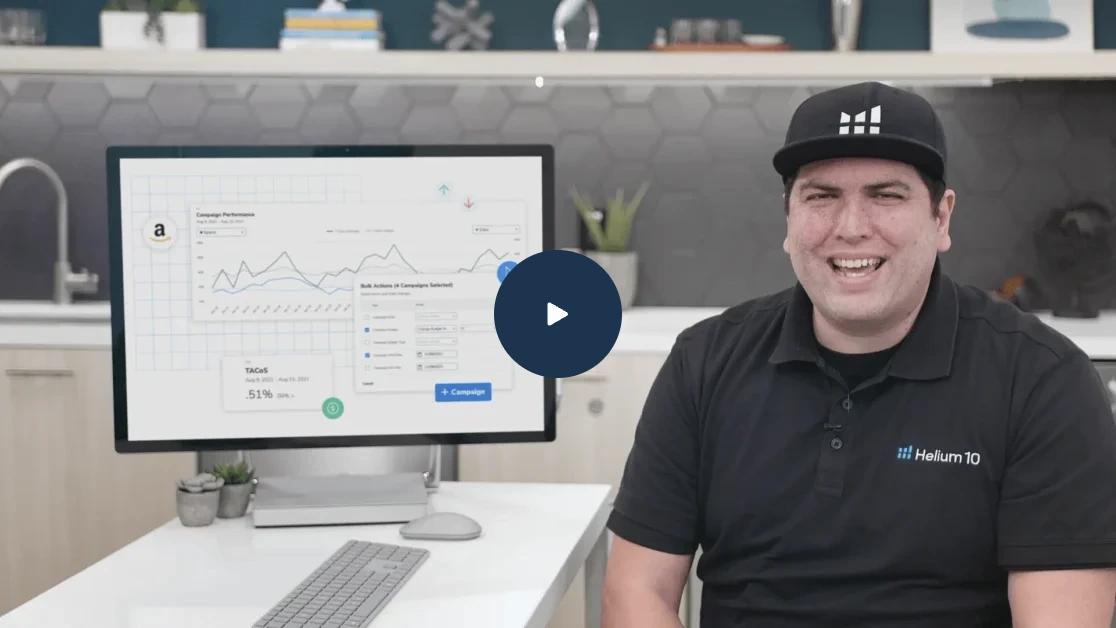
Smarter Amazon PPC Optimization: AI + Brand Analytics


Table of Contents
- AMAZON BRAND ANALYTICS ISN’T JUST A REPORT
- Start With What’s Already Working
- Understand Demand with Search Frequency Rank
- Competitive Visibility & Knowing Who You're Up Against
- WHERE AI ACTUALLY FITS IN YOUR PPC STRATEGY
- Turning Insight Into Action
- Making Smart Bid Optimizations
- What We Still Handle Manually
- CREATING A FEEDBACK LOOP WITH FIRST-PARTY DATA
- 1. Real-Time Learning From Actual Shopper Behavior
- 2. Let the Tools Adjust What You Can’t Manually Track
- 3. Scale What’s Working & Cut What’s Not
- CONCLUSION
Most brands running ads on Amazon aren’t lacking data, they’re just overwhelmed by it. Between keyword tools, campaign metrics, and marketplace shifts, it’s easy to get stuck guessing what to optimize next.
That’s where Amazon’s first-party data comes in.
Tools like Brand Analytics and Search Query Performance (SQP) offer direct insight into how customers are interacting with your brand and your competitors, from the keywords they are searching for to how often they are clicking and converting.
But those insights are only powerful if you know what to do with them.
This is where AI tools like Helium 10 Ads AI can completely change the game. This can save you from spending hours pulling reports and manually adjusting bids. It helps you:
- Auto-harvest high-intent keywords
- Adjust bids and placements based on actual performance
- Identify competitive gaps you might not catch manually
And when you layer AI on top of first-party data, you start to eliminate guesswork altogether. You’re now building a system that learns, adapts, and scales with you.
In this, we’ll break down how combining Amazon’s built-in data with the right AI tools can lead to smarter decisions, better returns, and a more efficient PPC strategy.
AMAZON BRAND ANALYTICS ISN’T JUST A REPORT
If you’re still only using keyword tools to plan your Amazon strategy, you’re missing the bigger picture.
Amazon’s Brand Analytics, specifically the Search Query Performance (SQP) report, gives you something most platforms can’t: a view into how customers are actually interacting with your brand on Amazon, across every part of the search funnel.
We’re not talking about theoretical volume or estimated performance here. SQP gives you real first-party data straight from Amazon. That includes your top search terms, how many people are clicking on you, how many are converting, and exactly how you stack up against the competition.
Start With What’s Already Working
With SQP, you can pull up an ASIN and instantly see the top 100 search queries that led to that product. You should use this weekly to answer questions like:
- Are we showing up for the right terms?
- Where are we winning share and where are we getting outperformed?
- Which keywords are driving traffic and sales, not just one or the other?
This helps us spot the keywords that actually matter. Not just terms with high search volume, but the ones that are proven to convert, because that’s what we care about.
“It’s not about finding every keyword. It’s about knowing which ones are winning and why.”
Understand Demand with Search Frequency Rank
Search frequency rank tells us how popular a search term is relative to others and when paired with conversion share, it tells a really clear story.
For example:
If a keyword is ranking high, but your click and conversion share are low, that’s not just a missed opportunity but a visibility problem. You’re probably losing ground to competitors on a term that could be a major growth opportunity. But you’d never know that from just looking at search volume or ad metrics alone.
On the flip side, you might find mid-volume terms where you’re converting better than anyone else. That’s where we double down, build out dedicated campaigns, and push budget toward what’s already working.
Competitive Visibility & Knowing Who You’re Up Against
Another reason we lean so heavily on SQP: it shows us where our competitors are beating us and where they aren’t.
When you click into a specific query inside SQP, Amazon shows up to the top 10 ASINs that are getting the most impressions, clicks, and conversions for that term. That means you can compare your product’s performance against the actual ASINs ranking for those same keywords and not just a generalized category or brand.
You can use this to:
- Measure share of shelf at the keyword level
- Identify which competitors are outranking you and why
- Spot new ASINs creeping into your territory (and build defense accordingly)
I haven’t even mentioned the best part. This isn’t just great for PPC. It’s also a powerful tool for cross-functional decisions such as pricing, creative, retail readiness, and even positioning.
WHERE AI ACTUALLY FITS IN YOUR PPC STRATEGY
AI gets thrown around a lot. We look at it as a system that helps you move faster, make more strategic decisions, and spend less time micromanaging campaigns.
If you’re using first-party data from Brand Analytics, you already have a better understanding of what’s working. AI tools like Helium 10 Ads AI are what allow you to act on that data at scale without burning hours inside ad groups.
“We use AI to support strategy, not replace it. It helps us move faster, test quicker, and manage more complexity, but only when it’s paired with strong fundamentals.”
Turning Insight Into Action
One of the most powerful use cases for AI is connecting insights from SQP and Brand Analytics with keyword-level campaign adjustments. For example:
- If you’re seeing a strong conversion share on a long-tail term, Ads AI can automatically add that to a manual campaign and start allocating spend toward it.
- If certain targets are underperforming based on ACoS or CVR, the tool can pull back bids or pause those terms without needing a manual audit.
It allows you to:
- Auto-harvest keywords from Auto campaigns and move them into manual (Broad, Phrase, Exact)
- Set custom bidding rules based on placement, CVR, or profitability targets
- Reallocate budget away from what’s not working and push it toward campaigns that are scaling
Making Smart Bid Optimizations
Bid optimization is one of the biggest time sucks in Amazon PPC and one of the easiest things to get wrong. Helium 10’s AI bidding engine watches performance data in real-time and adjusts accordingly:
- Bids go up when a keyword is converting well but not getting enough visibility
- Bids go down (or pause) when spend rises but sales don’t follow
- You can apply rules based on placement, match type, or ad type to refine this further
And unlike more rigid systems, the AI isn’t trying to fit everything into a single “ROAS target.” It works with your structure, whether you’re running rank-focused campaigns, efficiency campaigns, or trying to scale NTB purchases.
What We Still Handle Manually
Automation doesn’t replace strategy and that’s where most brands mess up.
AI is great at reallocating budget, optimizing bids, and reacting to performance trends. But deciding how to structure your campaigns, which keywords matter, or how to position your product? That still does require human context.
Focus on using AI to support scale but you’re still setting the vision. AI just makes sure we’re not wasting time doing repetitive tasks that can be automated.
CREATING A FEEDBACK LOOP WITH FIRST-PARTY DATA
The real value of combining Brand Analytics and AI isn’t in what you learn once but in how you use that data continuously to improve performance.
That means building a feedback loop. One where every click, every conversion, and every shift in performance helps inform your next move. Don’t just set up your campaigns and hope for the best. Create a system where data feeds strategy, and strategy feeds results.
Let’s look at this in three parts:
1. Real-Time Learning From Actual Shopper Behavior
Tools like SQP give you a clear view into how customers are engaging with your product today not just what a tool predicted they might search last quarter. Add in performance data from your ad campaigns, and you can start to answer questions like:
- Which keywords are converting right now?
- Where is our CTR dropping off?
- Are our top-spending targets actually driving incremental results?
When we see a target with a high CTR but low conversion rate, that’s a red flag. It might be a listing issue, or it could be the wrong audience altogether. Either way, it’s something to act on.
2. Let the Tools Adjust What You Can’t Manually Track
Once the structure is in place, AI helps close the loop. Helium 10 Ads AI can monitor CVR, ACoS, and keyword-level performance in real-time and make bid adjustments without waiting for a human to check in.
If trends shift or performance drops, campaigns don’t just sit there wasting spend.
It can:
- Pull back bids on underperforming targets
- Raise bids on top-performing keywords during peak hours
- Shift placement strategy automatically to match where conversions are actually happening
3. Scale What’s Working & Cut What’s Not
Too many brands spend weeks gathering data and then never take action. A real feedback loop only works when you’re actively responding to what the data is telling you.
That’s why we focus so much on tight segmentation and intentional budget distribution. When you’ve separated your high-intent keywords from your discovery campaigns, it becomes way easier to know where to push spend and where to pull back.
Perfection isn’t the goal. Agility is.
If a target is working, we scale it. If it’s dragging down efficiency, we cut it. If something’s trending up but not converting yet, we monitor. And with first-party data + AI, those decisions are faster and now more accurate than ever.
CONCLUSION
At the end of the day, this is just about making your life easier.
Brand Analytics and SQP give you a clear view of how shoppers are actually interacting with your brand. Giving you real visibility into what’s working, what’s falling flat, and where you’re losing ground to competitors.
Pair that with a solid AI tool like Helium 10 Ads AI, and you’re no longer reacting late. You’re spotting issues faster, shifting budget before it gets wasted, and scaling the things that are already doing their job.
You don’t have to rebuild your whole strategy overnight. But if you can build structure around the right data and set up the tools to support it, you’ll save yourself a lot of time and money.
That’s really what this all comes down to.
Achieve More Results in Less Time
Accelerate the Growth of Your Business, Brand or Agency
Maximize your results and drive success faster with Helium 10’s full suite of Amazon and Walmart solutions.

